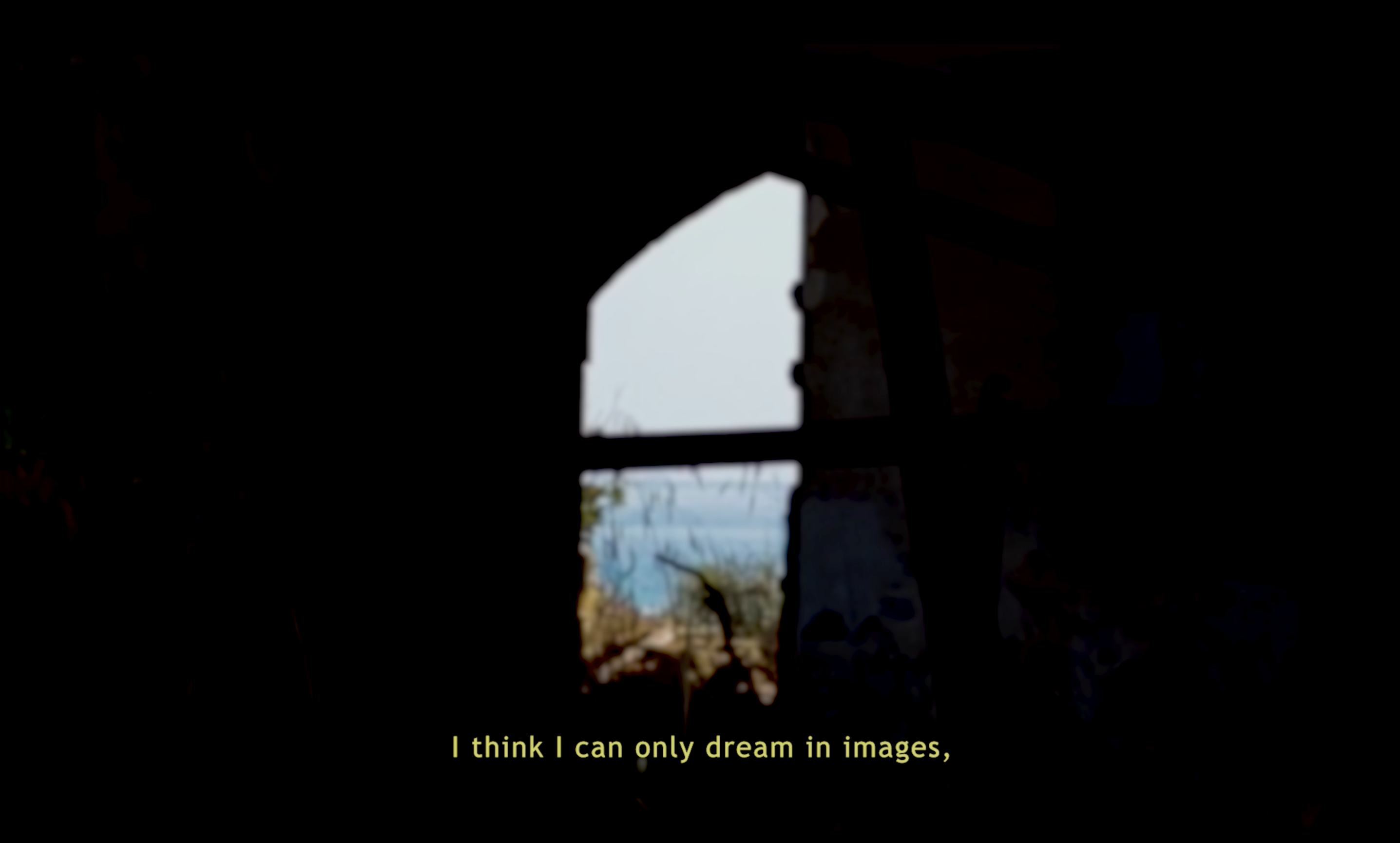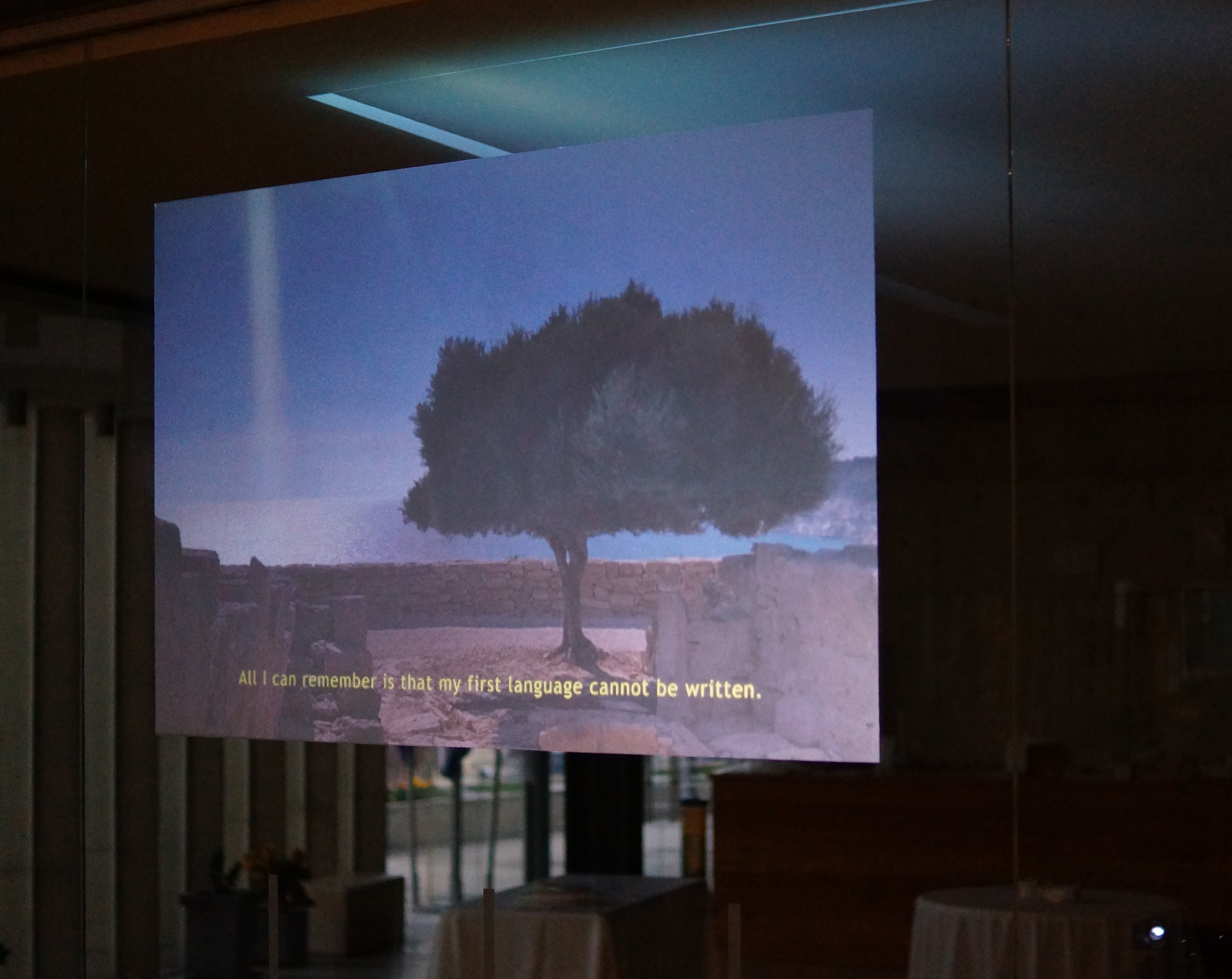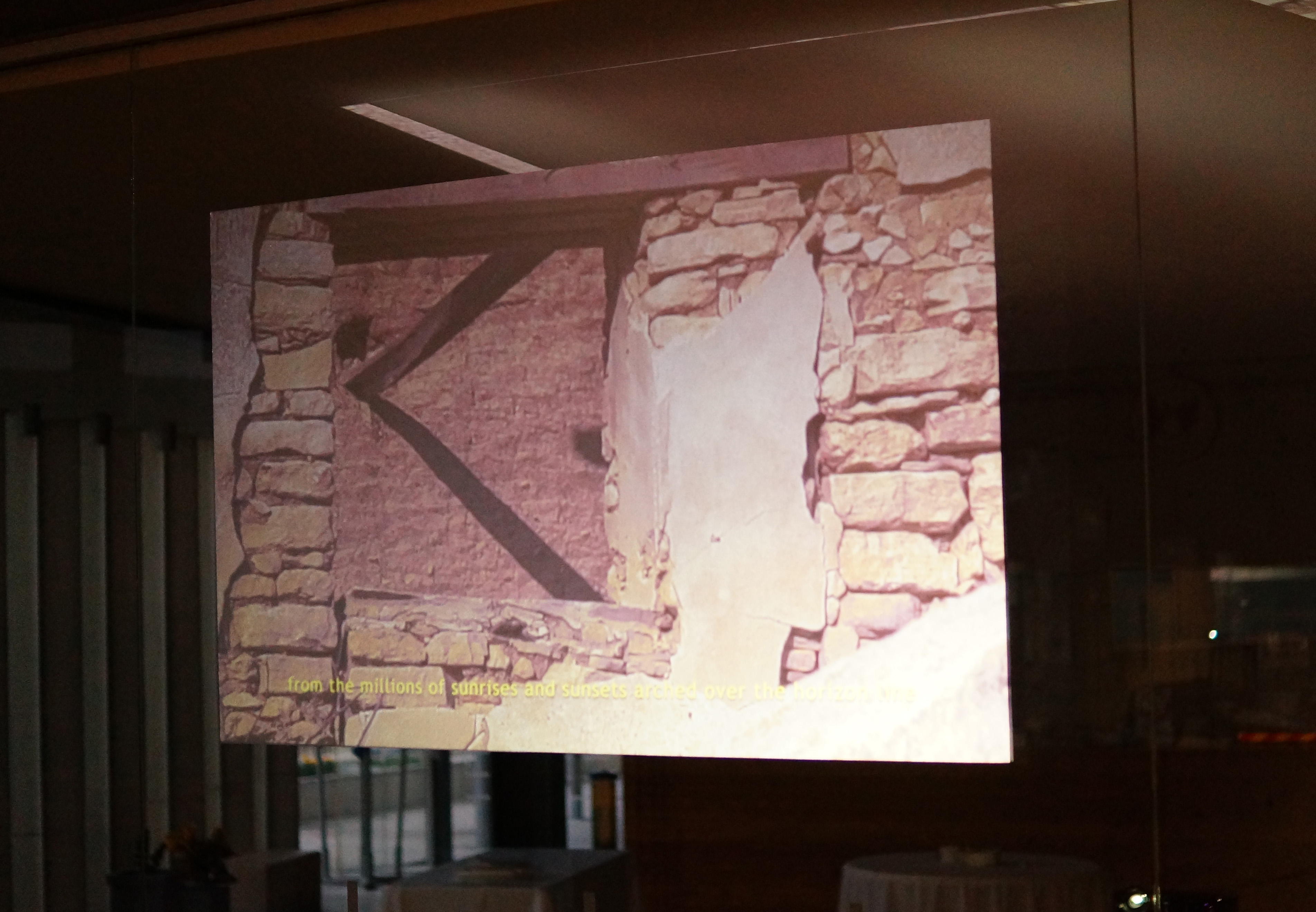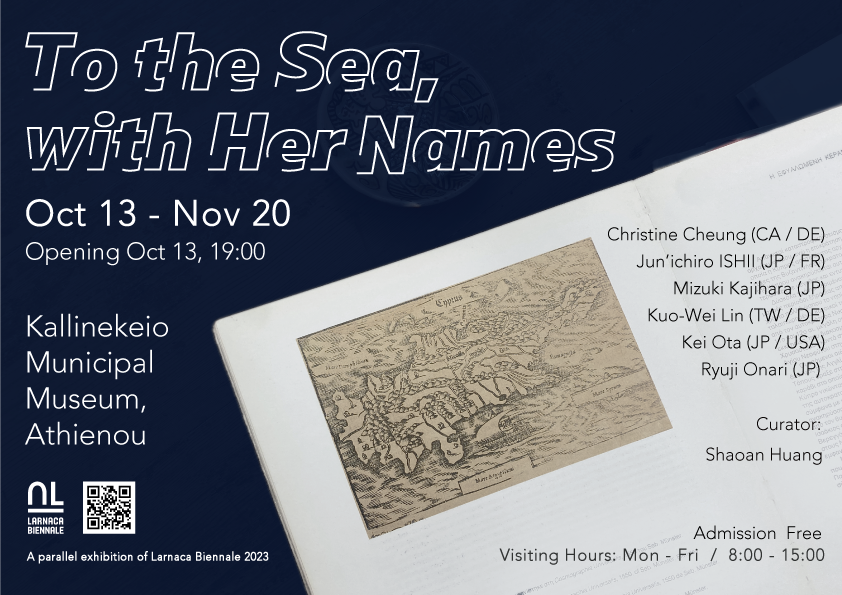Théatron
as part of To The Sea With Her Names
a parallel exhibition of Larnaca Biennale
Kallinekeio Municipal Museum, Athienou, Cyprus
Wallpaper on glass, 5:17 min video on loop, projector
The impetus for “Théatron” came twofold: my fascination with the structure of theaters and my interest in a “memory theater” (or “L’idea del theatron”) conceived by 16th-century Italian philosopher Giulio Camillo. Referencing a plethora of ideas and symbols such as the Bible, Homer, Zoroastrianism, Plato, Aristotle, Hermetiscm, and Kabbalism, Camillo mapped out all of human knowledge on different levels of a seven-tiered theater, based on Vitruvius's description of a Roman theater in his “De Architectura”. Camillo built on the Roman ars memoria, or "art of memory," which was based on memory loci, a mneumonic technique that ancient orators used to connect what they wanted to remember with specific places.
Although I am only taking the barebones of Camillo’s treatise, what stuck was his supposed inspiration from the root word of theater (théatron) in Greek, which comes from the verb “to see” (theaomai). Upon seeing the archaeological site of Kourion in Cyprus, where the Greco-Roman theater from the 2nd century BC sits, I imagined the theater as its own entity, accessing its memories within its own memory loci. What would it say as a multicultural being after countless borders and changes enacted over it? What remained the same from its viewpoint? My hope is that this piece will be a starting point for myself in thinking about how memory as a theatrical experience differs in specific places.





Sometimes I am asked what language I dream in
I don’t know
I have heard that our first language is the language of emotion
All I can remember is that my first language cannot be written
I think I can only dream in images,
from the millions of sunrises and sunsets arched over the horizon line
to the shadows that orbit around me
I live in repetition
The only constant is the sea
Sometimes the border between these different shades of blue ceases to exist
How can I tell when one blue ends and another one begins?
Sometimes it is as clear as the moon’s gaze piercing the dark,
but most of the time
I have trouble finding the border between memory and reality
just like the border between the sea and the sky.
The only constant is that I dream in images.
After all, my name is from the root word “to see”.
I am but a spectator of the world
The constant is the sea
of which I remain seated towards
My memories and imagination are reflected in the wall of blue
The sea lives in repetition too
As we watch each other
between the border of what is real and what is not.
I don’t know
I have heard that our first language is the language of emotion
All I can remember is that my first language cannot be written
I think I can only dream in images,
from the millions of sunrises and sunsets arched over the horizon line
to the shadows that orbit around me
I live in repetition
The only constant is the sea
Sometimes the border between these different shades of blue ceases to exist
How can I tell when one blue ends and another one begins?
Sometimes it is as clear as the moon’s gaze piercing the dark,
but most of the time
I have trouble finding the border between memory and reality
just like the border between the sea and the sky.
The only constant is that I dream in images.
After all, my name is from the root word “to see”.
I am but a spectator of the world
The constant is the sea
of which I remain seated towards
My memories and imagination are reflected in the wall of blue
The sea lives in repetition too
As we watch each other
between the border of what is real and what is not.
